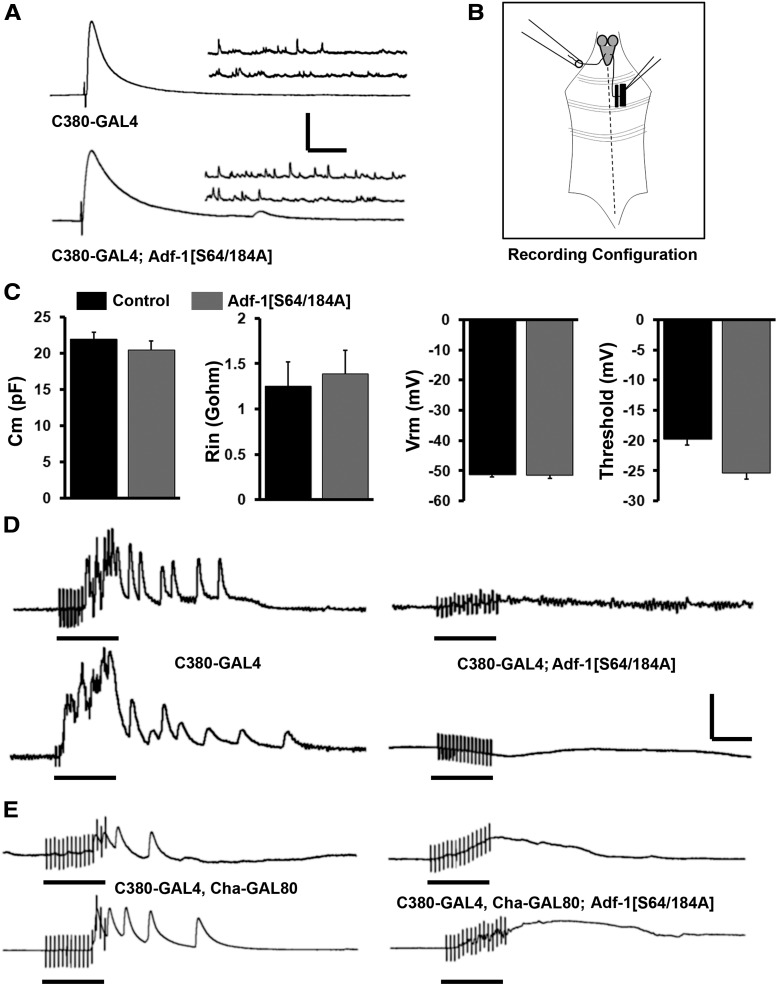Figure 5.
Adf-1-mediated dendrite phenotypes affect sensori-motor transmission in larvae. A, Neuro-muscular synaptic transmission (both evoked and spontaneous release) is unaffected following Adf-1 inhibition in motor neurons compared with control neuromuscular junctions. B, Schematic of recording configuration for testing sensori-motor transmission in larvae. C, Membrane capacitance, input resistance, resting membrane potential, and threshold of firing are comparable in control neurons and those expressing Adf-1[S64/184A], as measured using whole-cell patch-clamp. D, Representative muscle recordings reflecting motor neuron firing following stimulation of contralateral sensory afferents at 10 Hz for 1.5 s. Traces are shown from control animals (futschC380-GAL4/w1118) and animals expressing Adf-1[S64/184A] from the futschC380-GAL4 driver. E, Representative traces of muscle recordings, as in D, from animals that selectively express Adf-1[S64/184A] in glutamatergic motor neurons (futschC380-GAL4; Cha-GAL80; UAS-Adf-1[S64/184A] compared with appropriate genetic controls. Calibration: vertical = 10 mV; horizontal, (in A) EJP = 50 ms; mEJP = 500 ms; (in D and E) EJP and mEJP = 1 s. Black bars under traces denote the duration of sensory stimulation.

